Potential gradient
Storyboard
A gradient is a vector that is constructed for a function that indicates the direction and inclination that the function presents at all points. In particular the gradient of the electric potential is equal to minus the electric field.
ID:(1568, 0)
Gradient of a function
Image
The gradient is a vector calculated for a function that points to a maximum / minimum close to the point in which it is being considered.
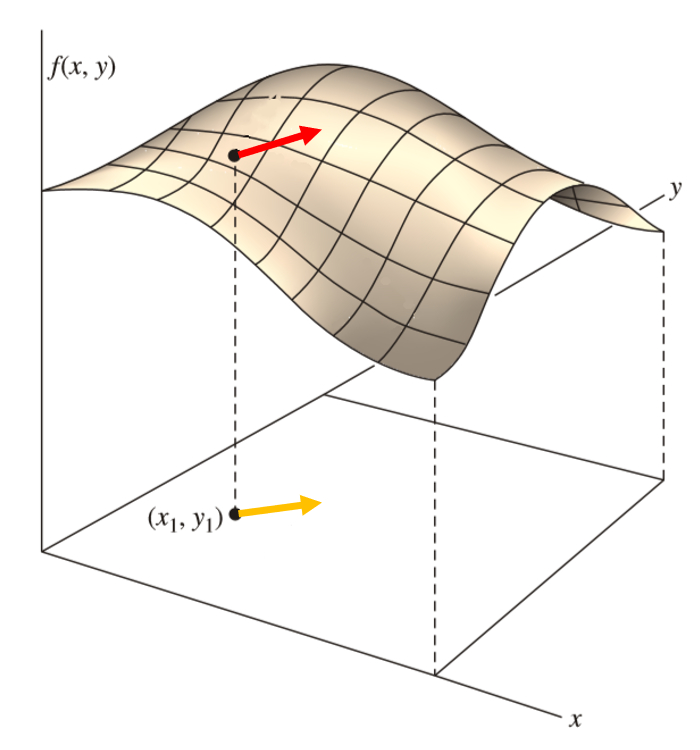
ID:(11555, 0)
Gradient in one dimension
Image
The gradient is a vector calculated for a function that points to a maximum / minimum close to the point in which it is being considered. In the case of a dimension this coincides with the slope of the curve:
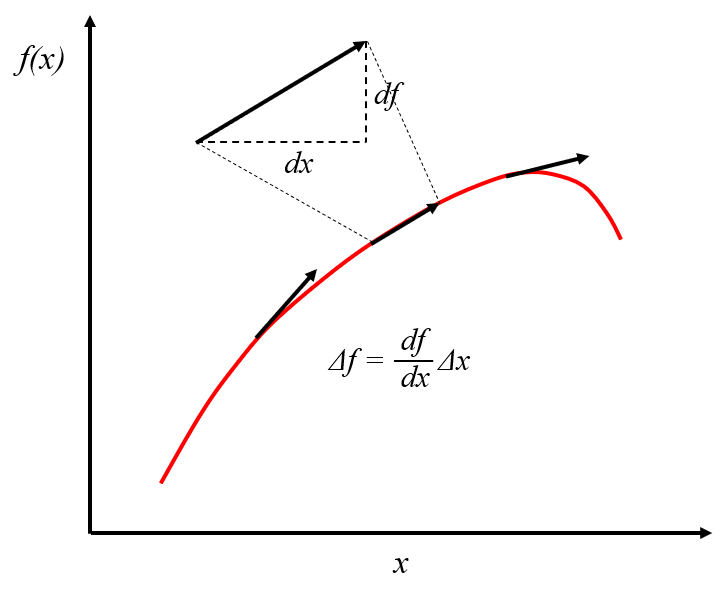
ID:(11558, 0)
Gradient in two dimensions
Image
The gradient is a vector calculated for a function that points to a maximum / minimum close to the point in which it is being considered.
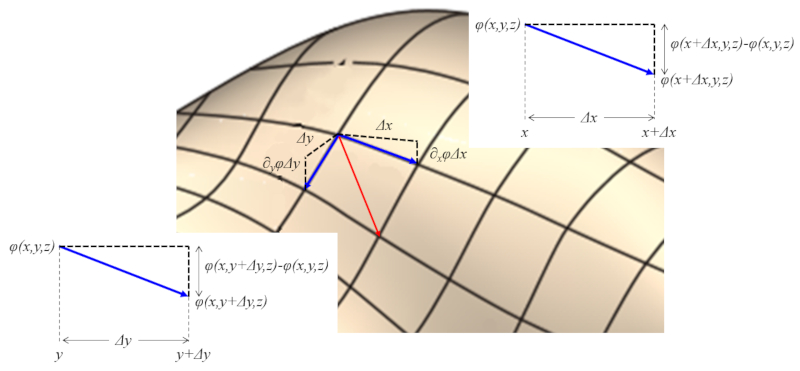
ID:(11605, 0)
Total variation
Image
The gradient is a vector calculated for a function that points to a maximum / minimum close to the point in which it is being considered.
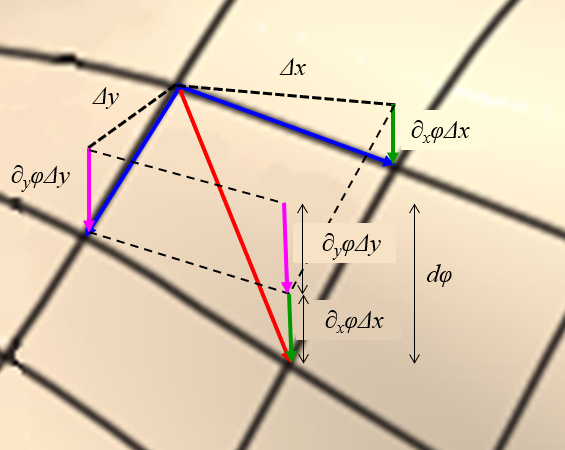
ID:(11606, 0)
Variation of the electric potential in three dimensions
Equation
La variación total se puede estimar como la suma de las distintas variaciones.
| $ d\varphi = \displaystyle\frac{\partial \varphi}{\partial x} dx + \displaystyle\frac{\partial \varphi}{\partial y} dy + \displaystyle\frac{\partial \varphi}{\partial z} dz $ |
ID:(11556, 0)
Gradient vector: the gradient
Image
The gradient is a vector calculated for a function that points to a maximum / minimum close to the point in which it is being considered.
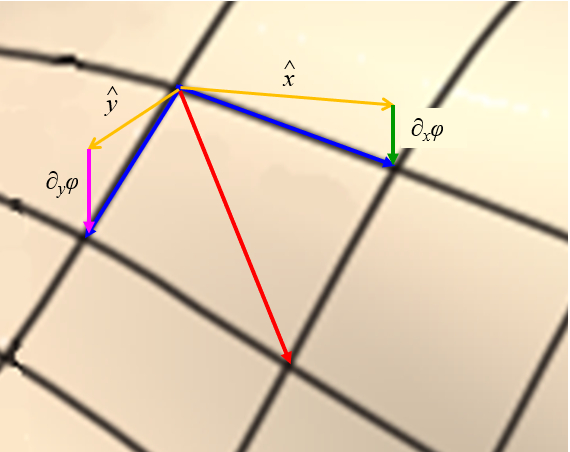
ID:(11607, 0)
Gradient of the electric potential
Equation
We can construct a vector tangent to the field considering the variation
| $ d\varphi = \displaystyle\frac{\partial \varphi}{\partial x} dx + \displaystyle\frac{\partial \varphi}{\partial y} dy + \displaystyle\frac{\partial \varphi}{\partial z} dz $ |
each component by itself assigning the corresponding versor:
| $ \nabla \varphi = \hat{x}\displaystyle\frac{\partial \varphi}{\partial x} + \hat{y}\displaystyle\frac{\partial \varphi}{\partial y} + \hat{z}\displaystyle\frac{\partial \varphi}{\partial z}$ |
ID:(11559, 0)
Field as gradient of electric potential
Equation
Since the change in potential is
| $ d\varphi = -\vec{E} \cdot d\vec{s} $ |
the gradient of the potential is
| $ d\varphi = \displaystyle\frac{\partial \varphi}{\partial x} dx + \displaystyle\frac{\partial \varphi}{\partial y} dy + \displaystyle\frac{\partial \varphi}{\partial z} dz $ |
and the element of the path
we have that the gradient of the potential is equal to minus the electric field
| $ \vec{E} = -\nabla\varphi $ |
ID:(11557, 0)
0
Video
Video: Potential gradient
